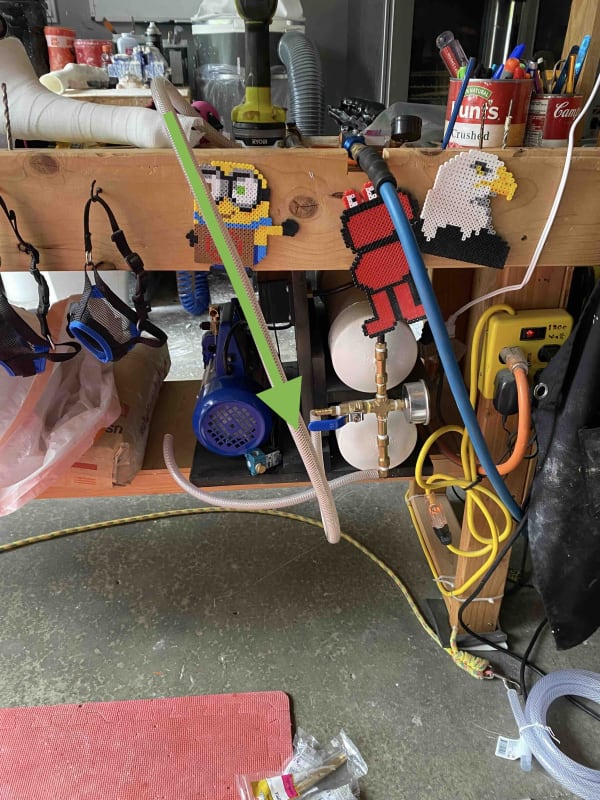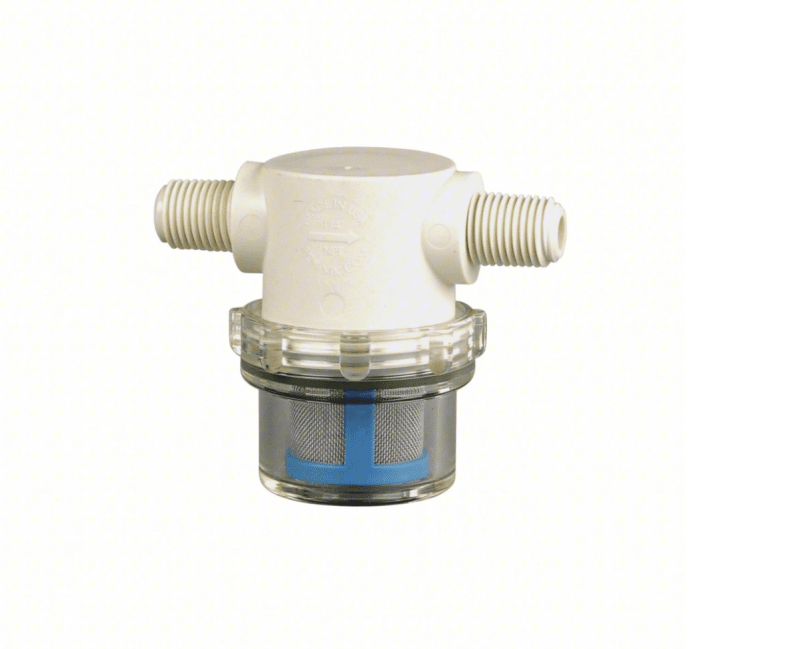Hi-
Apologies if this is in the wrong sub. I have a little vacuum pump system I use for to vacuum-form plastic over plaster models. My problem is that after a while tiny bits of plaster from the models gets pulled into the system and clogs it up. I just tore everything apart and cleared it out for the second time in the last year and would like to prevent future clogs.
The air comes in from my workbench and down the braided tube into the system. Would it be possible to add one of these air filters pictured below in the very beginning of the system to catch the fine plaster dust and sand size particles? If so would it have to be laying flat so the little bottle is on the bottom or could it sit vertically? If not, could I do a high loop type of thing where before the braided line comes down the back of my workbench into the system it goes up 2 feet or so and then back down to try and trap that debris in the bottom of the loop? I have the vacuum set to turn off when it hits 10 mmHg.
Any help would be appreciated. Thx


Apologies if this is in the wrong sub. I have a little vacuum pump system I use for to vacuum-form plastic over plaster models. My problem is that after a while tiny bits of plaster from the models gets pulled into the system and clogs it up. I just tore everything apart and cleared it out for the second time in the last year and would like to prevent future clogs.
The air comes in from my workbench and down the braided tube into the system. Would it be possible to add one of these air filters pictured below in the very beginning of the system to catch the fine plaster dust and sand size particles? If so would it have to be laying flat so the little bottle is on the bottom or could it sit vertically? If not, could I do a high loop type of thing where before the braided line comes down the back of my workbench into the system it goes up 2 feet or so and then back down to try and trap that debris in the bottom of the loop? I have the vacuum set to turn off when it hits 10 mmHg.
Any help would be appreciated. Thx


